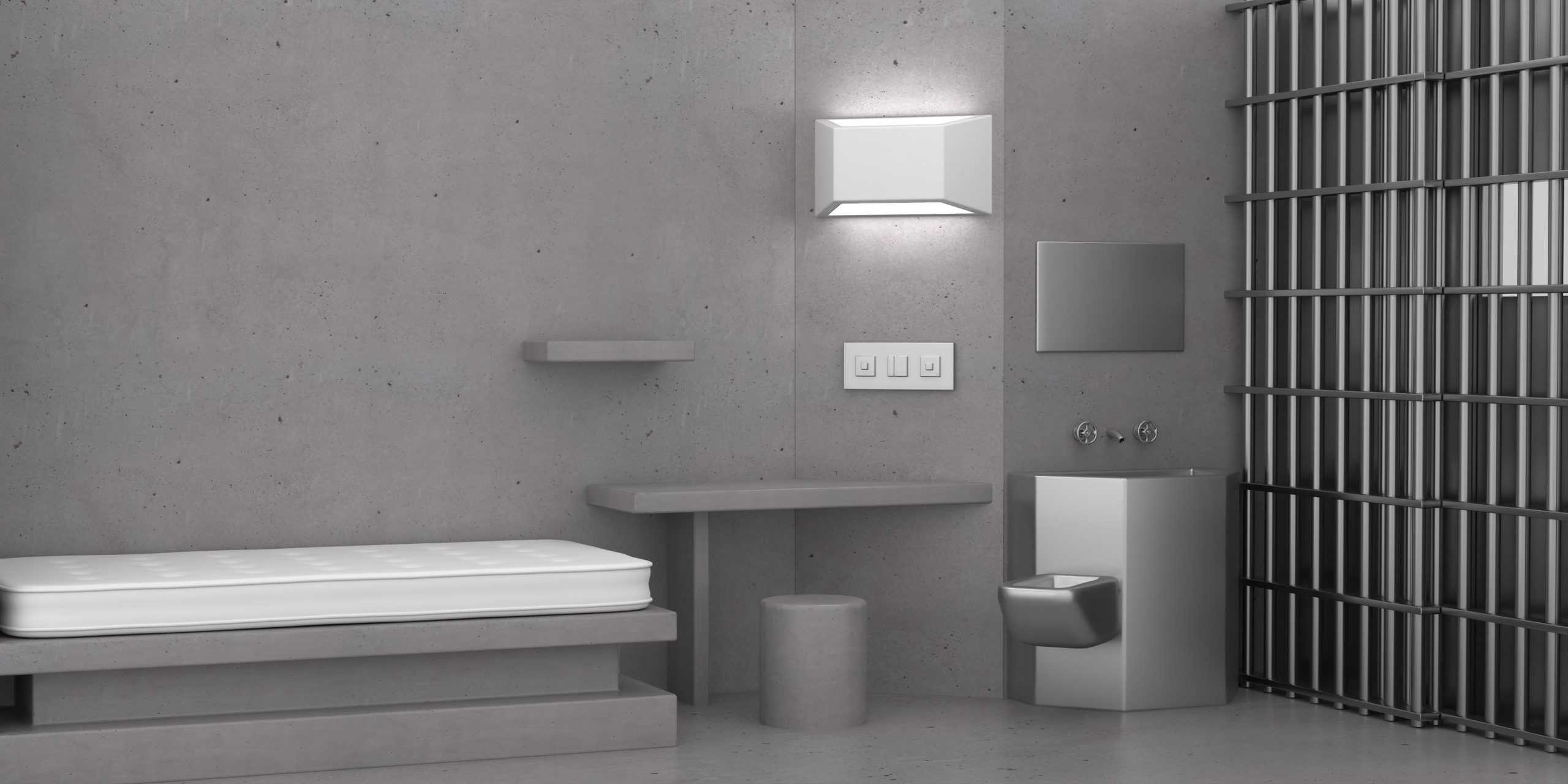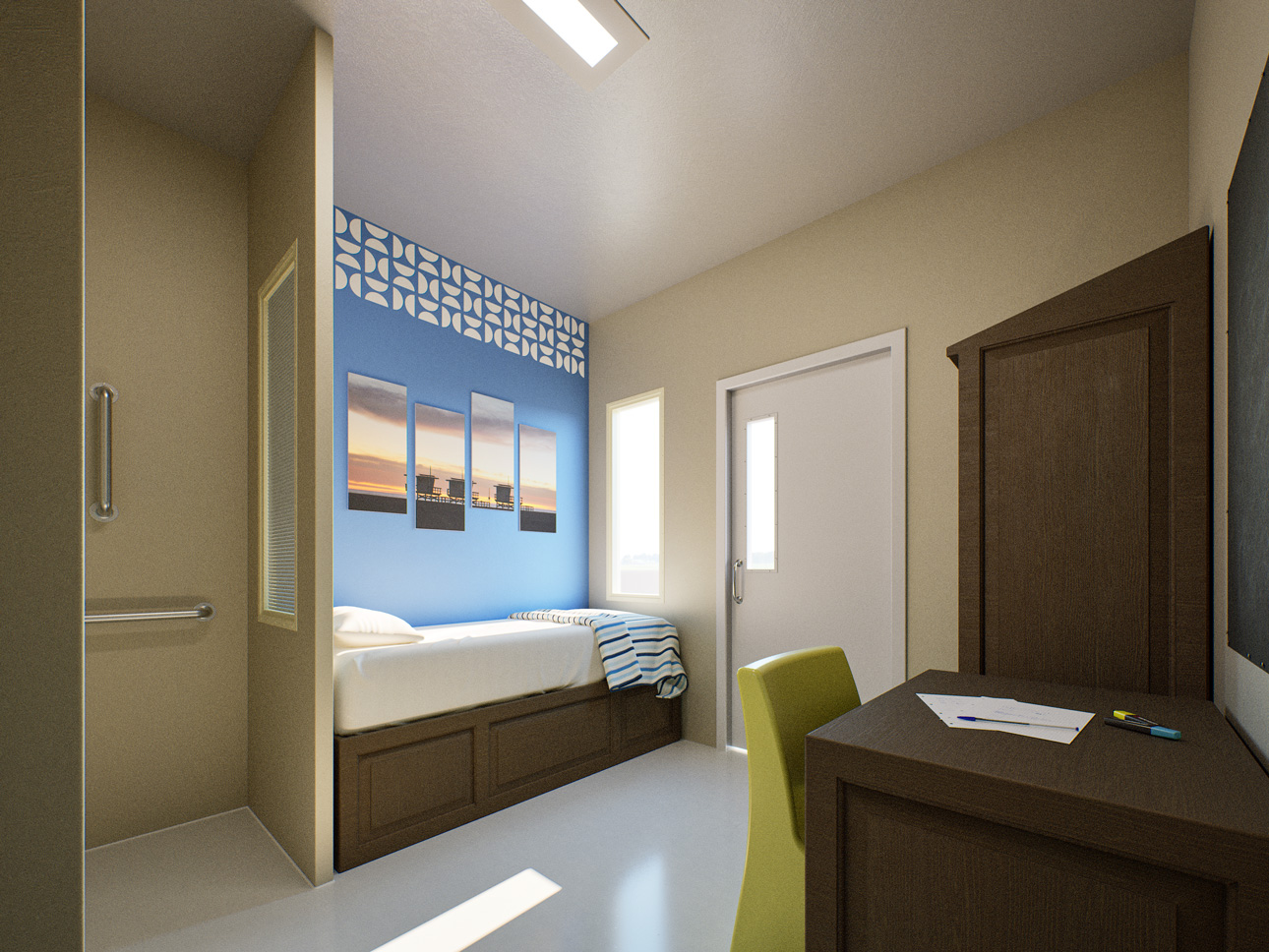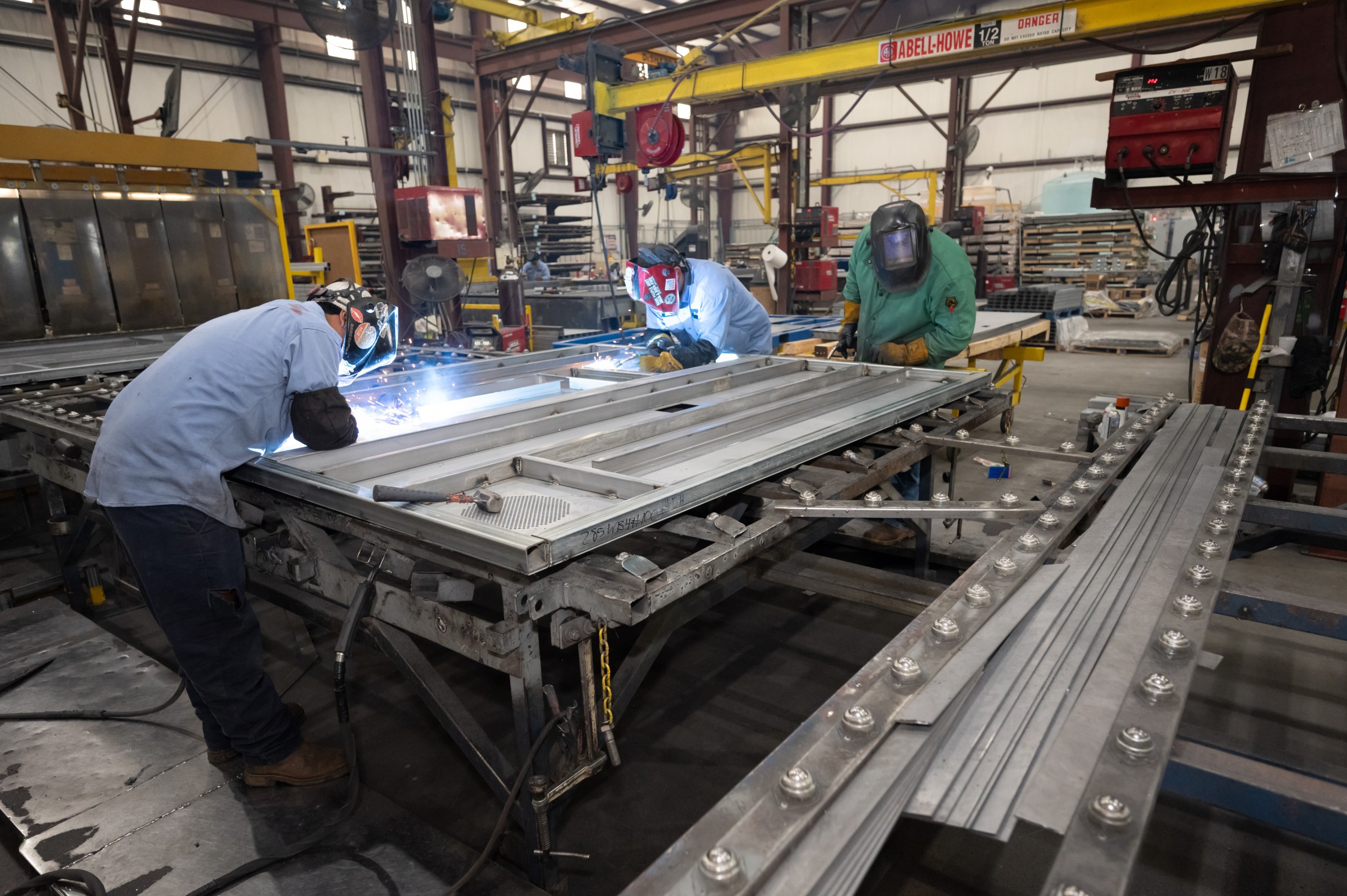What is Ligature Resistant and Why is It Important for Detention Centers?
Ligature-resistant and anti-ligature products and design are crucial in justice facilities, such as prisons and detention centers, to ensure the safety of both staff and inmates. These features are designed to minimize the risk of self-harm or harm to others by removing or reducing the potential for utilizing objects or fixtures that can support a ligature, which is a cord or rope used to strangle or harm oneself or another person. With the high rates of mental health issues and self-harm incidents in correctional facilities, the importance of ligature-resistant solutions cannot be overstated.
In order to be considered ligature resistant, a product or design must limit the ability to create anchor points where a ligature could be tied or looped. This often involves the use of sloped or curved surfaces, smooth edges, and secure fastenings that reduce the possibility of securing a ligature. These features are crucial in the design of cells, furniture, and other fixtures within justice facilities, where the safety of individuals is a top priority.
Key Takeaways
- Ligature-resistant features help ensure safety within justice facilities by preventing self-harm and harm to other inmates.
- Products and designs are considered ligature resistant if they minimize anchor points and potential for securing ligatures.
- The importance of implementing these solutions is heightened due to the prevalence of mental health issues and self-harm incidents in correctional environments.
Definition of Ligature Resistant
Ligature resistant refers to the design and construction of furniture, fixtures, and other objects in a way that prevents the attachment of ropes, cords, or other materials that could be used for hanging or strangulation. This concept is crucial in justice facilities, such as prisons, jails, and detention centers, where inmates may be at risk of harm, including self-harm and suicide.
The Facility Guidelines Institute defines the term as “without points where a cord, rope, bed sheet or other fabric/material can be looped or tied to create a sustainable point of attachment that may result in self-harm or loss of life.” Implementing ligature-resistant designs and materials in these facilities can help greatly decrease the risk of ligature-related injuries and fatalities.
Several factors contribute to the importance of ligature resistance in justice facilities. Firstly, the prevention of self-harm and suicide-by-hanging incidents among inmates is a primary concern for facility administrators. By implementing a ligature-resistant design, the facility can proactively address potential risks, thus minimizing tragic incidents while maintaining a safe and secure environment for inmates and staff alike.
Furthermore, ligature-resistant fixtures and furniture can reduce the risk of violent incidents and hostage situations, such as strangulation or chokeholds, which could result in injury to inmates, staff, or visitors. Implementing such designs acts as a protective measure for everyone within the facility, enhancing overall safety.
In conclusion, ligature resistance is an essential design consideration in justice facilities as it helps prevent significant hazards, such as self-harm and violent incidents. Employing these design strategies ultimately improves the safety and well-being of everyone within such environments.
Importance of Ligature Resistance in Justice Facilities
Inmate Safety
Ligature resistance refers to the features and designs in a facility that prevent the attachment of a ligature, which could be used for self-harm or suicide attempts. It is crucial for justice facilities such as prisons and detention centers to prioritize ligature resistance in their design to ensure the safety and well-being of inmates. In justice facilities, particular attention is paid to eliminating ligature points in cell designs to reduce the risk of self-harm or suicide by inmates.
This focus on ligature resistance also extends to other areas within the facility, such as common areas and bathrooms, where ligature points may still be present. Implementing ligature-resistant designs not only improves inmate safety but can also have a positive impact on the overall environment within the facility, promoting rehabilitation and reducing the stress experienced by inmates and staff alike.
Legal Compliance and Liability
Another critical reason for incorporating ligature-resistant designs in justice facilities is to comply with legal requirements and to protect the facility against potential liability claims. In many countries, various regulations and guidelines govern how prison spaces must be designed, and ligature resistance is an important aspect of those regulations. Failure to comply with these regulations could result in penalties for the facility, potential lawsuits, and negative public perception.
By making the facility ligature resistant, justice facilities demonstrate their commitment to the safety and well-being of inmates and staff while also protecting themselves from potential legal and financial consequences. In this regard, investing in ligature-resistant designs can be seen as both a moral and practical decision for those responsible for justice facility management.
Types of Ligature Resistant Items in Justice Facilities
Plumbing
Ligature resistant plumbing fixtures are designed to prevent self-harm by removing any potential ligature points. In justice facilities, they are often used in areas such as sinks and toilets. These fixtures typically have sloped tops, concealed piping, and no exposed hardware, making it difficult for individuals to tie objects around them. The design ensures that water remains accessible while minimizing potential risks.
Showers
Showers in justice facilities must also be designed with ligature resistance in mind. Similar to plumbing fixtures, they should have no exposed hardware that could serve as a potential ligature point. Showerheads should be anti-ligature, which often involves breakaway designs or recessed installations. Additionally, shower curtains and rods should be ligature resistant, using either breakaway systems or weighted curtains that deter attempts at self-harm.
Ligature Resistant Toilets and Toilet Units
Toilets and toilet units in justice facilities must also address the concerns of ligature resistance. These toilet designs include the elimination of exposed hardware and the use of smooth, sloped surfaces. A ligature resistant toilet will have a solid panel covering any plumbing to prevent the attachment of ligatures.
Furniture
Furniture in justice facilities, such as beds, chairs, and tables, should also be ligature resistant. Specific design considerations include:
- Sloped or rounded surfaces to minimize potential ligature points
- Sturdy construction that resists tampering or disassembly
- The use of tamper-resistant hardware
- Weighted or anchored furniture to prevent movement or using the items as potential weapons
Doors and Windows
Doors and windows in justice facilities require ligature resistant features as well. Door handles should be designed to minimize ligature points, often using recessed or flush-mounted hardware. Hinges, locks, and other components should also be tamper-resistant and concealed when possible.
Window design should prevent both escapes and ligature risks, usually by incorporating security glazing and using internal blinds or shutters in place of traditional curtain systems. Additionally, window bars or screens should be designed to prevent their use as ligature points, such as bars that prevent attachment of objects.
Incorporating these ligature resistant features in justice facilities is essential for the safety and wellbeing of both staff and individuals in custody, ensuring a secure and supportive environment.
Ligature Resistance Testing and Standards
Ligature resistant refers to a design approach that aims to prevent the attachment of ligatures, which are materials that can be used for self-harm or for inflicting harm on others. In justice facilities, it is crucial to focus on ligature resistance to reduce self-harm or suicide attempts and protect both inmates and staff.
There are various testing and standards developed to ensure the ligature resistance of products used in such facilities. These include door handles, plumbing fixtures, furniture, and other accessories that are designed to minimize the risk of ligature attachment. These standards provide guidelines for evaluating the efficacy of these products in resisting potential ligature threats.
One example of such a standard is the American National Standards Institute (ANSI) and the Builders Hardware Manufacturers Association (BHMA) A156.34 Standard, which focuses on door hardware and sets guidelines for its ligature resistance capabilities. Similarly, the American Society of Heating, Refrigerating, and Air-Conditioning Engineers (ASHRAE) Standard for Ventilation in Detention facilities outlines the requirements for HVAC systems to ensure ligature resistance.
Furthermore, tests need to be conducted on these products to determine their adherence to the standards and their actual performance in real-life situations. Organizations like the National Sanitation Foundation (NSF) and Underwriters Laboratories (UL) provide certification and testing services to evaluate the performance and compliance of these products.
Manufacturers also play a vital role in developing ligature-resistant products that comply with these standards. They ensure the design, material selection, and construction of such products reduce the possibility of harmful events in justice facilities.
In conclusion, ligature resistance testing and standards are crucial in ensuring the safety and well-being of individuals in justice facilities. Adhering to these guidelines helps minimize self-harm and violence, providing a secure environment for inmates and staff alike.
The Role of Design in Enhancing Ligature Resistance
Ligature resistance refers to the design elements and features that minimize the risk of self-harm or harm to others by reducing the chances of tying, binding, or hanging objects to fixtures in a built environment 1. This concept is crucial in justice facilities where occupants may be more likely to engage in self-harm or violent acts. In this section, we discuss the role of design in enhancing ligature resistance within these facilities.
One key aspect of design involves the use of ligature-resistant materials and product designs for fixtures and fittings. Every element within a justice facility, from door handles to taps and plumbing fixtures, must be carefully selected and designed to ensure they are ligature-resistant. For example, sloped surfaces, recessed door handles, and breakaway closet rods can minimize the potential for ligature incidents.
In addition to selecting ligature-resistant products, facility layouts should be designed with safety in mind. Ensuring that spaces have good visibility and are easy to monitor by staff can help prevent incidents before they occur. The layout should also address blind spots and use natural surveillance principles to promote a safer environment.
Lighting plays a significant role in promoting a ligature-resistant environment. Bright, evenly distributed lighting can reduce shadowy areas and increase visibility, making it harder for individuals to engage in self-harm unnoticed. Additionally, using tamper-proof light fixtures can reduce the risk of ligature points further.
Finally, artwork and color schemes can impact the overall atmosphere within a justice facility, helping to create a more calming and therapeutic environment 3. Designers should select colors and patterns that promote wellbeing and reduce stress levels among occupants, ultimately contributing to a safer and more ligature-resistant environment.
In summary, several design elements work together to enhance ligature resistance within justice facilities. By considering the selection of products, layout, lighting, and aesthetics, designers can create safer spaces for occupants and staff alike.
Getting Ligature Resistant Parts in Your Facility
We provide thousands of options of ligature resistant parts at SteelCell. We’ve been in the industry for decades and can help facilities pick the most cost efficient and long-lasting parts that work well for them. If you’re interested, contact us.
Conclusion
Ligature-resistant design plays a crucial role in ensuring the safety and well-being of individuals within justice facilities. By minimizing the risk of self-harm and suicide, these design elements create a safer environment for both inmates and staff members. Implementing ligature-resistant fixtures and furniture within correctional institutions demonstrates a proactive approach to address mental health concerns and promote a more humane and secure setting for all.
Developing spaces with few or no ligature points not only prevents the use of self-harm tools, but also encourages a more effective management of individuals with mental health issues. Reducing opportunities for self-injury allows for the allocation of resources to provide more personalized and comprehensive mental health support for inmates. Ultimately, incorporating ligature-resistant elements in justice facilities contributes to a more effective and compassionate approach to rehabilitation and treatment programs.
In the long run, prioritizing ligature-resistant design has the potential to improve outcomes for individuals in correctional settings, providing safer environments and better opportunities for recovery and reintegration into society. By recognizing the importance of addressing mental health concerns within the walls of justice facilities, we can promote a more comprehensive and humane approach to criminal justice that values the well-being of all individuals involved.



